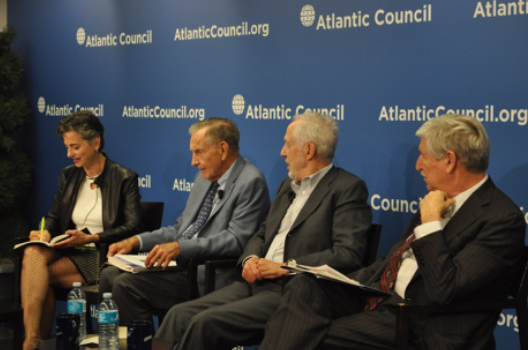 The United States’ cultural diplomacy programs and science exchanges with the Islamic Republic of Iran have brought benefits to both countries and to people around the world.
The United States’ cultural diplomacy programs and science exchanges with the Islamic Republic of Iran have brought benefits to both countries and to people around the world.
Over the past two decades, the National Academies of Sciences, Engineering and Medicine, in conjunction with several US universities, have identified key areas of mutual benefit, including seismic science and engineering, conservation and the effective use of water resources and resilient cities. Political developments in both countries, however, threaten the continuation of this important work, leading to an uncertain future.
On September 8, 2017, the South Asia Center’s Future of Iran Initiative hosted a discussion coinciding with the publication of a new book, US-Iran Engagement in Science Engineering, and Health (2010-2016): A Resilient Program but an Uncertain Future by Glenn Schweitzer of the National Academies.
As Director of the Office for Central Europe and Eurasia at the National Academies, Schweitzer spoke extensively about his new book, which documents the scientific rewards that have resulted from US-Iran exchanges. He pointed out that the US doesn’t “do exchanges for the sake of exchanges” but that the subject matter must have utility for both sides and be in areas in which Iran has significant expertise.
As a sign of progress on the Iranian side, he noted the exponential growth in Iranian publications in peer-reviewed science journals in recent years. In a PowerPoint presentation, Schweitzer also noted that 1500 scientist from 120 institutions have participated in exchanges, which included 32 workshops held in equal proportion in Iran, the US and third countries. “Our goal is to cooperate in science,” he said. “With good science collections, diplomacy will follow easily.”
David Laylin, a bi-cultural ecologist with extensive experience in rural Iran working on wetland conservation and water management, said that with the doubling of Iran’s population since the revolution to a current 80 million, “Forests have been devastated, the wetlands are almost dry, arable lands over-tilled leading to dust storms, range lands have been over-grazed… rainwater turns to floods because of lack of ground cover… and surface water has been mismanaged.” Thus, Laylin believes that there is a lot that Iran can learn from the United States and conversely, the United States from Iran, in dealing with these environmental challenges.
John Limbert, professor of Middle Eastern studies at the US Naval Academy and a long-time expert on Iran who served there before and during the 1979 revolution, said that, “the political stalemate of the last 38 years, remains.” However, he believes that through programs such as science exchanges, there may be a breakthrough. “I think we are onto something,” he said. “I think there is a chance. After all, we have been doing these exchanges for 20 years.”
Image: Barbara Slavin, Glenn Schweitzer, David Laylin, and John Limbert discuss " Science Exchanges with Iran: Mutually Beneficial but Uncertain Future.”
